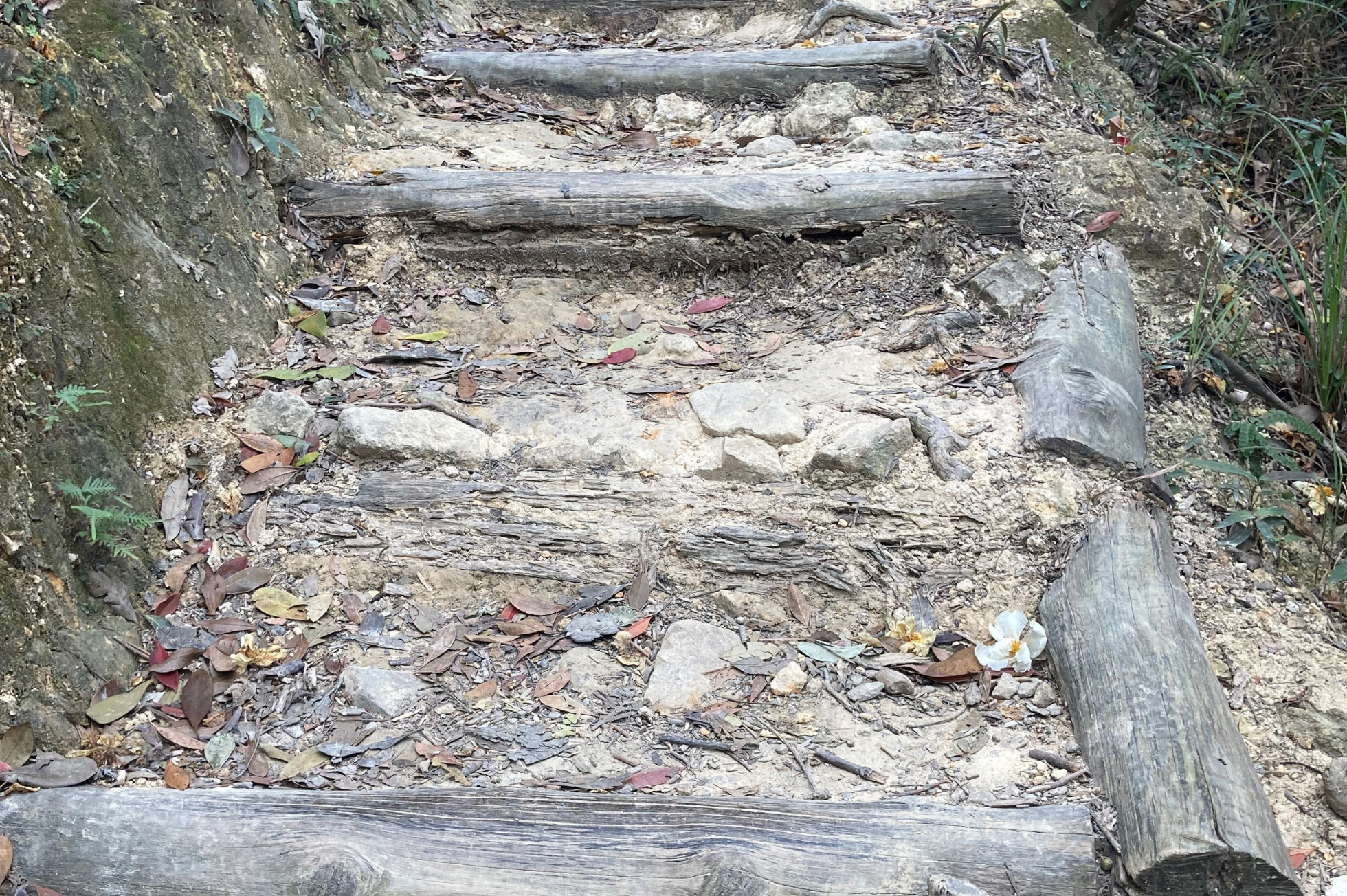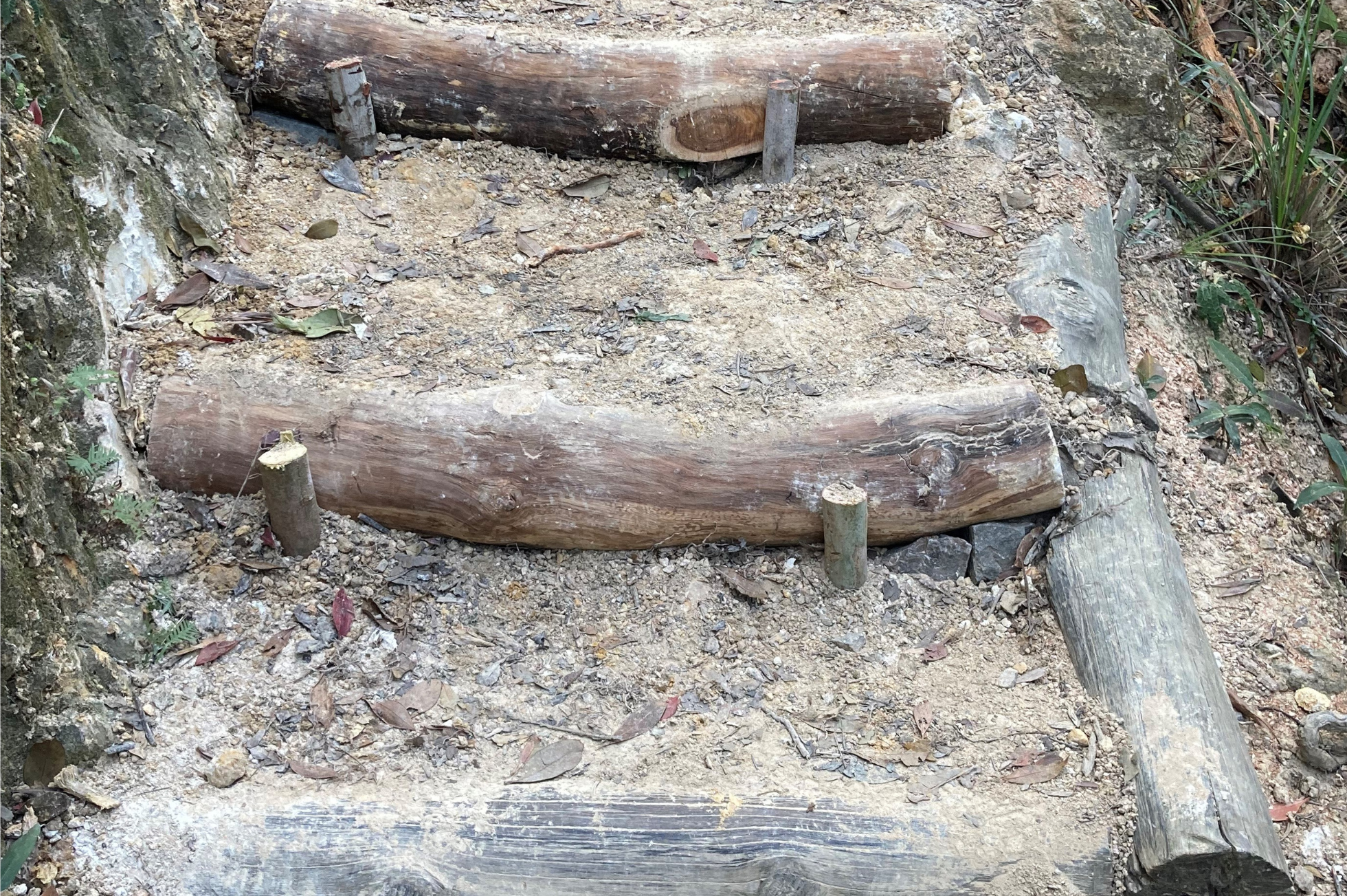Footprints of the Handcrafted Trails
The Green Earth volunteer squad has participated in handcrafted trail workshops at country parks. Let’s take a moment to explore the achievements of our efforts!
Footprints of the Handcrafted Trails
The Green Earth volunteer squad has participated in handcrafted trail workshops at country parks. Let’s take a moment to explore the achievements of our efforts!
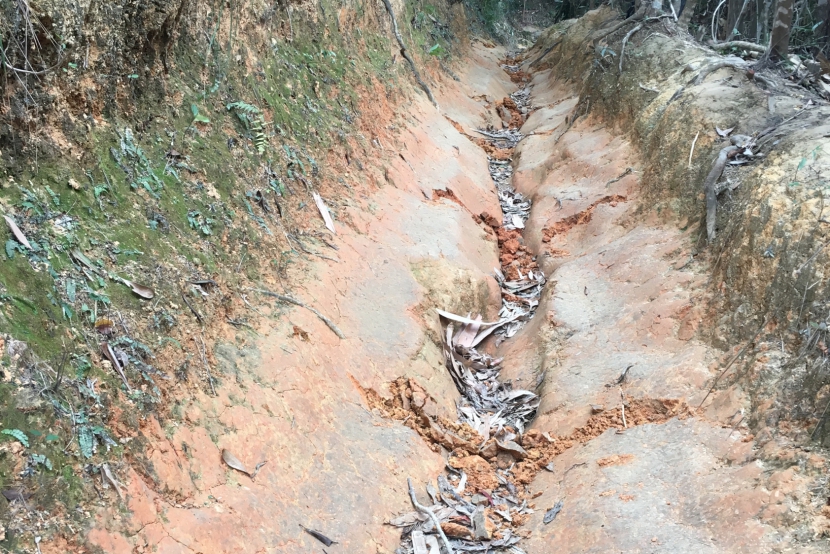
At Tze Kong Bridge in Tai Tam Country Park, the trail has been transformed from a smooth dirt track into a concave V-shaped gully, due to increased use and continuous erosion by rainwater. Walkers are now restricted to the “slopes” on either side of the gully, which can be particularly slippery and challenging in wet weather.
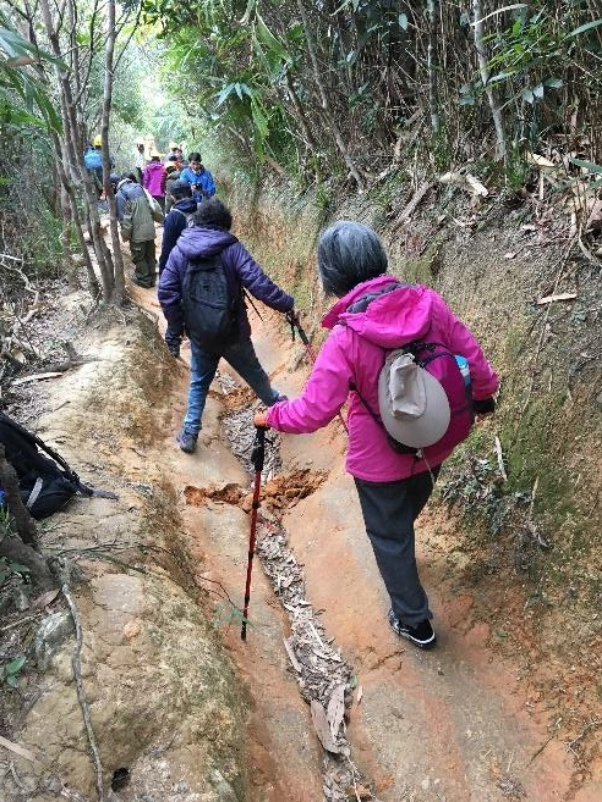
As a result, a group of trail volunteers, guided by AFCD masters and a team from the Taiwan Thousand Miles Trail Association, worked to repair a section of the trail at Tze Kong Bridge. They transformed deep pits into a safe and easily accessible natural trail by using horizontal logs.

Photo: Taiwan Thousand Miles Trail Association came to Hong Kong and shared their experience.
2018
Before & After

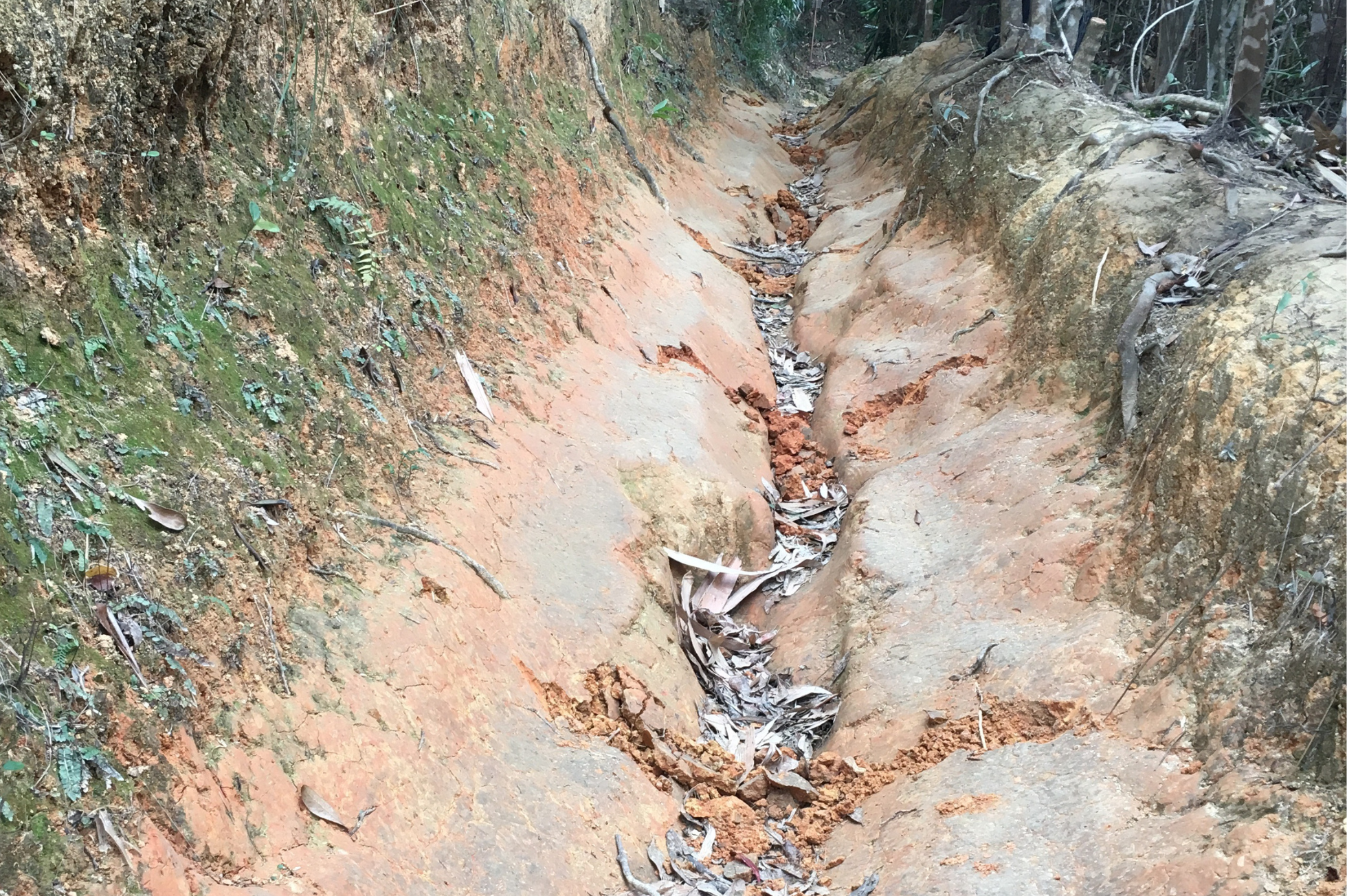
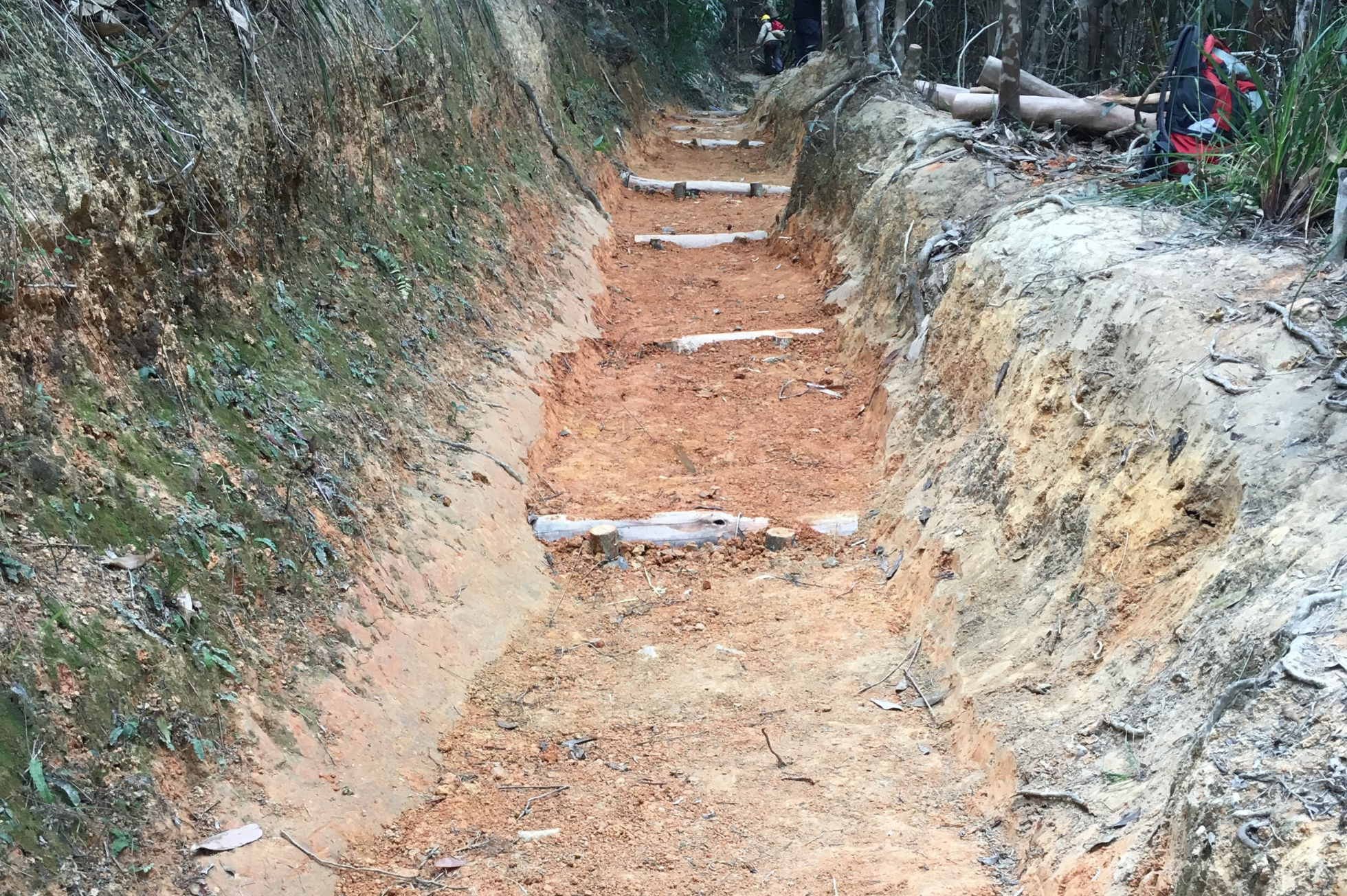
In the past, the AFCD mainly used stone to repair trails because of its durability. In Hong Kong, natural timber is mainly from fast-growing trees, which tend to rot after 4 to 5 years of use and therefore require frequent replacement; as a result, timber is rarely used for trail construction. However, in 2018, the Department experimented with using fallen logs collected after Typhoon Mangkhut as timber for trails, making Tze Kong Bridge one of the first sites to use this approach to build wooden steps.
|
After 5 years, some of the logs are naturally rotted and need to be replaced. |
In 2023, volunteers returned to Tze Kong Bridge with new horizontal logs and dowels. |
 |
2023
Before & After

